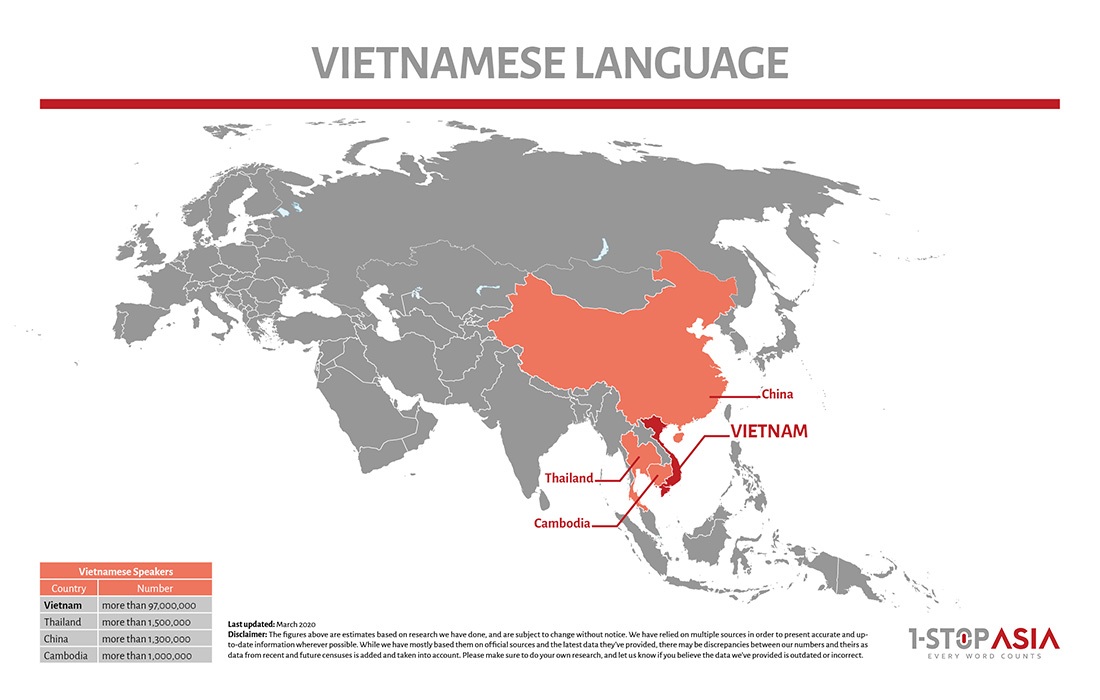Vietnamese Language
Reach 68M Vietnamese Speakers with Expert Translation Services
To make Vietnamese content feel natural, it’s important to understand the differences between northern and southern dialects. Our translators make sure your message sounds right wherever it’s read.
Vietnamese is a beautifully expressive language – rich with poetry, rhythm, and nuance. Once you’re fluent, other languages can sometimes feel a bit too plain not because they are simple, but because Vietnamese sets the bar so high.
You feel it is high time you focus on what matters most - your clients? We can assist.
Why Professional Vietnamese Translation Requires Expertise?
The Written Language
Vietnamese translation is not simple. With a tonal alphabet, strong regional variation, and deeply embedded cultural markers like honorifics, it takes more than fluency to get it right.
Northern vs. Southern Vietnamese
The North and South of Vietnam have distinct vocabulary, pronunciation, and grammar. The Northern dialect is standard, while the Southern dialect feels more conversational, which can make translations feel awkward or confusing.
Honorifics and Social Hierarchy
In Vietnamese, personal pronouns like “I” and “you” change depending on age, gender, and social relationship. The honorific system is deeply tied to culture and how you refer to yourself and others reflects respect and hierarchy. There’s no universal “you,” and choosing the wrong form can be rude or too casual. That’s why translators need cultural fluency, not just language skills.
Challenges of the Writing System
Vietnamese uses a Latin script, but its meaning depends on diacritics. These small marks change tone and pronunciation and if they’re lost or mishandled, the message can be completely misunderstood. Despite improvements, some CAT and DTP tools still struggle with preserving them and that’s why specialized tools have to be used to ensure every tone is accurately captured and preserved.
The Spoken Language
Vietnamese is a complex language with distinct regional differences and accurate translation requires an understanding of these nuances.
Dialects: Vietnam has three main dialects: Northern, Central, and Southern. The Northern dialect, used in Hanoi, is the standard for official communication. The Southern dialect, common in Ho Chi Minh City and overseas, is more informal and conversational. The Central dialect has significant vocabulary differences, which can make it harder for speakers of Northern and Southern dialects to understand.
Tone and Pronunciation
Vietnamese is a tonal language meaning that tone can change the meaning of a word entirely. There are six tones, and mastering them is crucial for accurate translation. For non-native speakers, mastering tones is often the hardest part of the language. However it is crucial for accurate meaning and expression.
Choosing the Right Dialect
Translating Vietnamese isn’t simple. Whether you’re targeting Northern, Central, or Southern audiences, it’s important to choose the right dialect to ensure your message is clear and culturally relevant and our experts are here to guide you through these choices.
Get exclusive insights into the world of translation, localization, and the language industry.
How We Can Support You
Native Translators with Local Expertise
At 1-StopAsia we help you connect you with your target audience in a way that truly resonates. Our native Vietnamese linguists understand both language and culture, enabling us to tailor the tone, style, and language to suit your specific needs. We don’t just translate - we ensure your message speaks directly to the Vietnamese audience.
25 Years of Expertise
Through our 25 years in the industry, we’ve built a team of professionals who truly understand the challenges of translation workflows. They quickly assess clients’ needs and provide professional translation services to match them. Always ready to assist with your inquiries, they also save you time while delivering you accurate translations.

